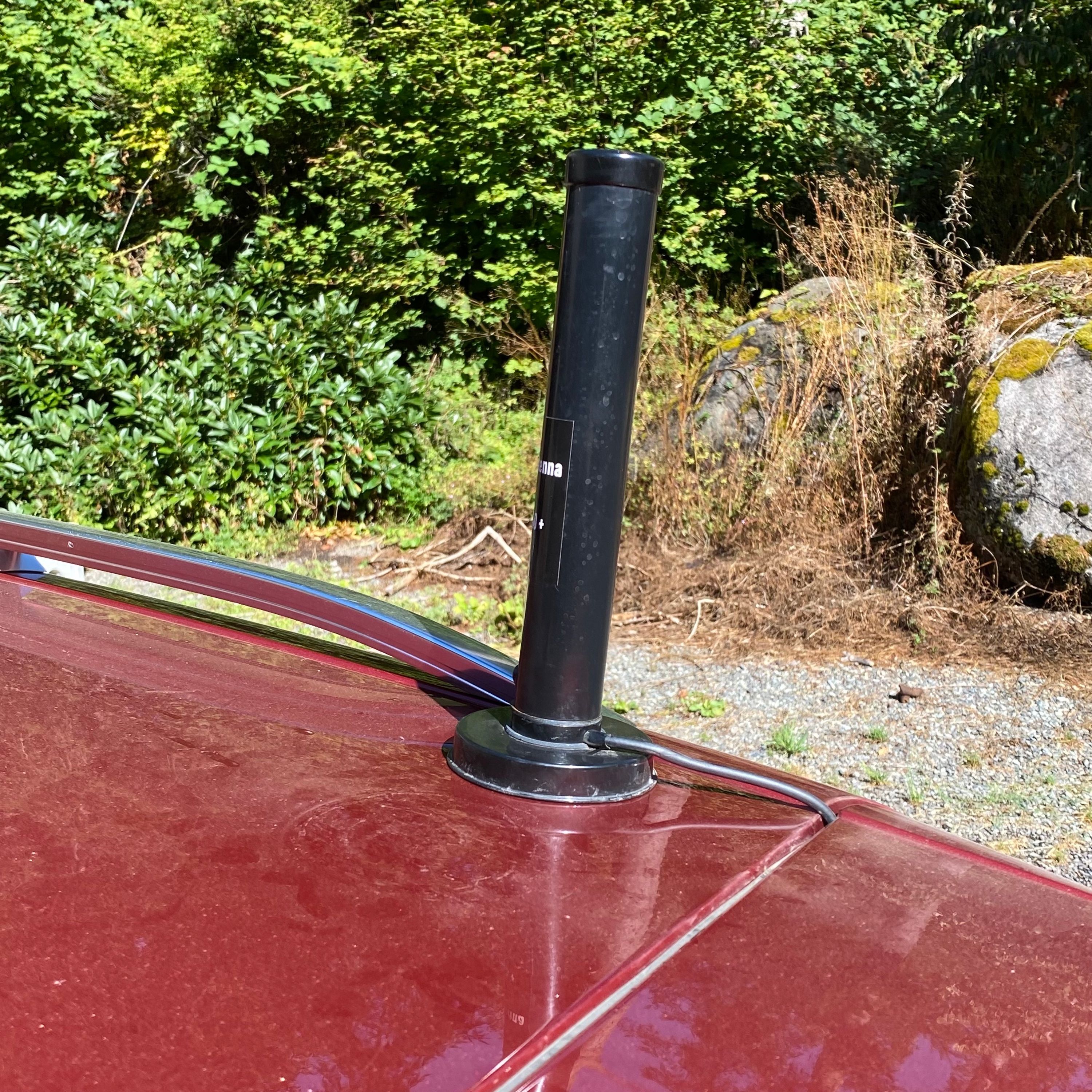Compactenna 2m/440+
Date 9/5/2022

YouTube decided I needed to watch a video about the COMPACTenna line of antennas. The inventor, Jack Nilsson N8NDL, states that the antenna was developed to offer superior performance in NLOS (non line of sight) environments. Well, I live in the Snoqualmie Valley, nestled up in the foothills of the Cascade Mountain range. Much of the surrounding area (in particular, my home) is forested. Between the hills and the trees, picket fencing is a nonstop issue when operating a mobile radio while in motion. Nilsson has several videos where he vaguely explains the principles behind the antenna but there are two problems:
- I am far from expert on antenna design, and the actual antenna construction is not described.
- Nilsson’s presentation style reeks of snake oil. That doesn’t mean the antenna design is bullshit, it may just be that Nilsson inadvertently chose to make videos that remind me of Ron Popiel.
The antennas are priced in the ~$100 range. That’s a premium over competitive antennas from Comet, Diamond, Nagoya, etc. which seem to cluster around ~70. But one of the features of the COMPACTenna is that it’s quite, er, compact - about 1.5″ in diameter and only 9″ long.
I was skeptical of the performance claims after watching several YouTube videos evaluating the performance, including several excellent videos that do a head to head comparison in real time with a vehicle in motion. After thinking it through, though, I started to ponder. Most of the reviews of the antenna focussed on signal strength. Did I care about antenna gain, or did I care about signal strength, or did I care about signal/noise ratio and resistance to fading, dropouts, and picket fencing?
What I wanted was the resistance to dropouts and picket fencing. Generally, when I’m driving around, signal strength isn’t the issue, it’s dealing with stuff interrupting the signal path, plus multipath as the signal reflects down the length of the valley.
So I bought the antenna, popped it on the car, and I’m giving it a whirl. I have not done a two radio, head to head realtime evaluation, which is the obvious way to evaluate the thing. Instead I’m just using the antenna day to day. Provisional suspicions/conclusions:
- lower gain than the Comet SBB-224’s I’ve used up until now, by perhaps 3-6 db on 440MHz.
- less racket and rattle from multipath and picket fencing
- fewer dead spots where moving the vehicle just a little bit while you’re stopped (e.g. at a stop light) gets you out of the dead spot.
Firm conclusions:
- Damn, this thing is short. When it’s the antenna on the car, no worries about parking garages with low ceilings.
